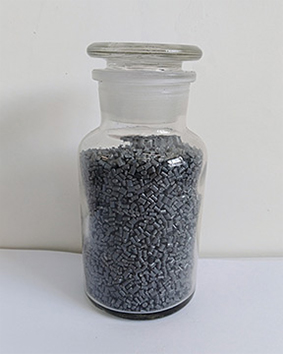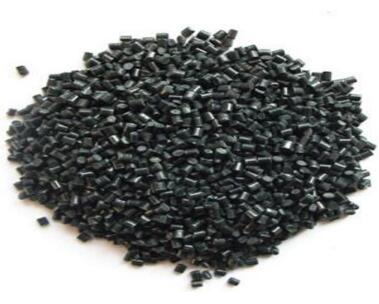What is PP recycled material? PP is the abbreviation of polypropylene plastics, PP recycled material is also called polypropylene recycled material. Regeneration also refers to recycling, is relative to the new raw materials after the second thermoplastic treatment of the general term. After the general plastic is used once, it can be used as raw material again by thermal extrusion granulation of recycling machine. The recycled polypropylene material is called PP recycled material.
Grade of recycled PP material:
Super grade polypropylene
① There is no submerged material;
② The raw material is transparent and the color is colorless or white;
③ Melting point: About 172 ℃. After melting, there is no impurity such as unburned material and carbon black;
④ Ash: there is a little carbon black precipitated during combustion, the flame is yellow, there is no black in the molten matter, and there is no ash after combustion;
⑤ Stretching: put out the fire after burning and melting. Use a small wooden stick to contact the molten material. Pull out the 20cm long silk. After cooling, observe that the wire should be smooth and can stretch more than 150% cold.
Lower limit of super grade polypropylene
① There is no submerged material;
② The raw material is transparent, and the color is gray and yellow (due to processing temperature deviation);
③ Melting point: About 172 ℃. After melting, there is no impurity such as unburned material and carbon black;
④ Ash: during combustion, there is a little carbon black precipitated, the flame is yellow, there is a little black smoke at last, there is a little carbon black in the molten debris, and there is no ash after combustion, and the ash content is ≤ 1%;
⑤ Stretching: extinguish after burning and melting, use a small wooden stick to contact with the molten material, and pull out the 20cm long silk. After cooling, the wire should be smooth, and can be cold stretched for more than 150%.
First grade polypropylene
① There is no submerged material;
② The raw material is transparent or waxy, and the color is light gray, light yellow or white;
③ Melting point: About 172 ℃. After melting, there is no impurity such as unburned material and carbon black;
④ Ash content: when burning, the flame is yellow, then with carbon black precipitation, and finally with black smoke, the molten debris is wax like at first, and then black due to carbon content. Ash transparency ≤ 1%, white ≤ 2%;
⑤ Stretching: extinguish after burning and melting, use a small wooden stick to contact the molten material, and pull out the 20cm long wire. After cooling, the wire should be smooth and can be cold stretched for more than 100%.
Lower limit of first grade polypropylene
① There is no submerged material;
② The raw material is transparent or waxy, and the color is light gray, light yellow or white, slightly darker than the first grade material;
③ Melting point: About 172 ℃. After melting, there is no impurity such as unburned material and carbon black;
④ Ash content: when burning, the flame is yellow, then with carbon black precipitation, and finally with black smoke, the molten debris is wax like at first, and then black due to carbon content. Ash transparency ≤ 1%, white ≤ 3%;
⑤ Stretching: extinguish after burning and melting, use a small wooden stick to contact the molten material, and pull out the 20cm long silk. After cooling, the wire should be smooth and can be cold stretched for more than 80%.
Secondary polypropylene
① There is no submerged material;
② The raw material is transparent or waxy, glossy, white, yellow, green, etc. the cut color is consistent with the material color;
③ Melting point: About 172 ℃. After melting, there is no impurity such as unburned material and carbon black;
④ Ash content: the flame is yellow when burning, and then with carbon black precipitation, it becomes a torch shape with black smoke, and the flame is stable without deflagration. After burning, a little white ash can be seen by naked eyes, and the ash content is ≤ 5%;
⑤ Stretching: extinguish after burning and melting, use a small wooden stick to contact the molten material, and pull out the 20cm long silk. After cooling, the wire should be smooth and can be cold stretched for more than 80%.
Tertiary polypropylene
① There is no submerged material;
② The raw material has a little glossiness, the color is white, yellow, green, etc., the cut color is consistent with the material body color;
③ Melting point: About 172 ℃. After melting, there is no impurity such as unburned material and carbon black;
④ Ash content: the flame is yellow when burning, and then with carbon black precipitation, it becomes a torch shape with black smoke, and the flame is stable without deflagration. After burning, a little white ash can be seen with naked eyes, and the ash content is less than 7%;
⑤ Stretching: extinguish after burning and melting, use a small wooden stick to contact the molten material, and pull out the 20 cm long wire. After cooling, the wire should be smooth and can be cold stretched for more than 50%.
Lower limit of tertiary polypropylene
① Sunk material ≤ 5%;
② The raw material has a little glossiness, the color is white, yellow, green, blue, etc., the cut color is slightly white than the material body color;
③ Melting point: about 170 ℃. After melting, a little insoluble matter can be identified by naked eyes, and the particles of the insoluble matter are relatively small;
④ When burning, the flame is yellow, then a little gray black, and the combustion is intensified. Because there is a little deflagration phenomenon with impurities, the melted objects are gray. After burning, a little ash can be seen by naked eyes, and the ash content is ≤ 10%;
⑤ Stretching: extinguish after burning and melting, use a small wooden stick to contact the molten material, and pull out the 20cm long silk. After cooling, the wire is not smooth and brittle, and can be cold stretched for more than 20%.
Grade 4 polypropylene
① Sunk material ≤ 10%;
② The raw material has no glossiness, the color is gray, black yellow, black green, etc., and the incision is white;
③ Melting point: about 170 ℃. After melting, a little insoluble matter can be identified by naked eyes, and the particle size of the insoluble material is small;
④ When burning, the flame is yellow, then there is a little gray black, and the combustion is intensified. Because there is a little deflagration phenomenon with impurities, the melted objects are gray. After burning, a little ash can be seen by naked eyes, and the ash content is less than or equal to 15%.
Grade five polypropylene
① Sunk material ≤ 20%;
② The raw material has no glossiness and black color. Because of the more regeneration times, there are many small holes in the incision;
③ Melting point: about 165 ℃. After melting, a little insoluble matter can be identified by naked eyes, and the particle size of the insoluble matter is small;
④ When burning, the flame is yellow, and then there is a little gray black, and the combustion is intensified. Because of the impurities, there is a little deflagration phenomenon
Professional production--global recycling standard GRS certification






 Current location:
Current location:





